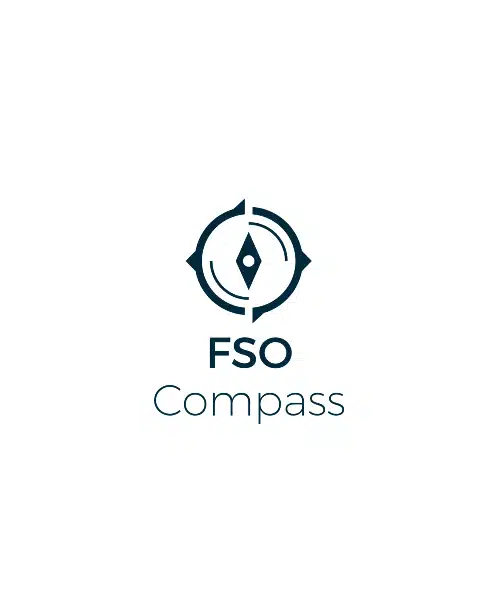Practice for the Foreign Service Officer Test with The FSOT Simulator!
I created The FSOT Simulator because what was available for folks to use was lacking. Either it was lacking in the number of questions asked, lacking in utilizing a timing function, lacking in giving feedback to your answers, and/or lacking in suggestions of what resources you should seek to help you improve.
Lacking.
The FSOT Simulator was created to help applicants fill this void and practice more fully the Job Knowledge section of the FSOT and to receive feedback on both correct and incorrect answers.
What follows is my reasoning for creating it and a discussion of its current published form.
So, how did I get it in my head to create this?
A year ago, Fall 2015, I started thinking of ways to improve my FSOT score. I could read more, but I wanted a new approach. I also wanted something that could help my fellow applicants.
I determined that what I needed was more practice on actually taking the test- the whole test. Not just the Job Knowledge and English Expression, but also the essay portion.
After some research, I learned that finding actual practice for the FSOT was limited. By “actual practice” I mean finding a resource, book, or online tool that feels like you are taking the real test.
Now, some resources are available for the JK and EE, but there is nothing available for the essay. Yes, you can think of a question topic and then write about it on your own, but the biggest problem with that is you are cheating yourself of the actual experience.
You see the essay portion is all about not knowing the question and answering it within a 30-minute window. If you know the question ahead of time, you already have a faulty practice.
Fast-forward a couple of months, and I finish coding the Essay Simulator. I created it the way I wanted it to look and feel, which was as close as possible to the actual test (and as much as was possible with the coding knowledge I possessed).
After practicing with the Simulator, I was much better able to determine how quickly 30 minutes times out and how quickly I needed to arrange my thoughts to form an argument.
I liked what I had, and I posted it. Not soon after, that day actually, I learned that the Board of Examiners had just implemented a character limit on the essay.
This was a golden piece of information to learn! I was able to apply a character limit into the program quickly and notify the forums.
It’s been a hit ever since! (Especially one week before each test window- seriously, my traffic spikes 2-3x.) A complete rundown of The Essay Simulator can be found in a previous post.
My experience with The Essay Simulator opened up the possibility for a bigger project: the creation of a full FSOT Simulator.
Creating The FSOT Simulator
Unlike the essay sim, I wanted this new simulator to have a professional look to it. That means I had to understand that my coding was limited and that I needed to find external help. As a person who likes to do as much of the work of a personal project on his own, this was a pill to swallow. But, I am glad that I did.
I looked around for a few weeks and determined the best approach to creating the “portal” was by combining the assistance of two specialized online companies.
With the portal determined, I now had to focus on writing the questions.
When it came to the questions, there was only one option: I had to come up with all of them. This was for the sole purpose of keeping to the Non-Disclosure Agreement that I agreed to before taking the FSOT. As the sole creator, I know that my questions are similar to those that could be asked on the test, but are not the questions asked on a test I have taken, which is a crucial distinction. Had I asked others for assistance, I risked them submitting questions that they had been asked, and thus breaking the NDA, which I will not allow.
Though the portal is designed for all three sections, I have only created the JK section so far, but I do plan to create an EE section and adding an essay question in the future.
The Job Knowledge Section
If you’ve taken the Simulator already, have taken the FSOT, or have read the study guide, then you know that the number of questions per ‘knowledge area’ is weighted differently. There are 8 knowledge areas and 60 questions, if you were to divide that evenly it would be 7.5 questions per area, so some areas are naturally asked more than others (as you cannot have a half question).
For those who do not know, the JK sections is made up of the following eight areas:
- United States Government
- United States History, Society, Customs, and Culture
- World History and Geography
- Economics
- Mathematics and Statistics
- Management Principles, Psychology, and Human Behavior
- Communications
- Computers and the Internet
How the Board of Examiners and/or Pearson VUE divide the number of questions between areas is unknown by me, though I have heard two opinions. First, that each area is pre-determined and the types of questions asked are the same for every candidate. Second, that depending on the cone you choose (political, management, economic, public diplomacy, or consular), you will receive more questions that relate to that area.
I would love to hear your thoughts on it.
As for The FSOT Simulator, you’ll have to take it to find out. ☺ There was a method to it, and it was not arbitrary designation.
The Functions
The FSOT Simulator tries as much as possible to be similar to the actual test. In doing so, it stands out from the crowd: the State Department’s practice test, the official study guide, and unofficial study guides. In creating the Simulator, this was a principle goal.
To accomplish this, the Simulator has four key components.
First, it is on the computer. So…. What? You might ask. Remember, the whole point is to make you as comfortable as possible taking the FSOT. By hosting this test online, as opposed to offline, you have access to similar functions to the examination, and the questions are paginated (only one problem appears at a time). If you facilitate a similar environment to the test, then you become more accustomed and prepared. This is one reason why you see so many AP, SAT, and GRE practice programs.
Second, you are asked 60 questions and have 40 minutes to complete it, just like the JK section of the FSOT. No other resource online does this. Offline resources do present you with a pool of questions, but they are either A) broken up by area and not mixed, B) not truly representative of FSOT questions, and/or C) they show you the answers below the questions… which is not helpful. The Simulator fixes all of this and adds a countdown clock.
Third, you are presented with similar functions: “next question”, “previous question”, and an “answer later” button are all available. A countdown timer is also visible. Differences lay with a review page, the answer page, and the way the “answer later” function works, but these differences are made because they serve your interest, as this is a practice test.
Fourth, as just mentioned, is the answer page. This page not only presents why your answer is correct or incorrect but also some background on the other answer options and suggestions on what to review if you receive a low score on a given area. This, I believe, is vital information. Not only do you learn from mistakes you may make, but you also learn about similar topics related to each question and answer.
Final Thoughts: Bringing it all Together
This website was created to be a resource. I’ve written about my experience with the Foreign Service Officer application process, have printed different informational pages (e.g., the FSO Salary, which is the number one page visited on my site), and I have mentioned my experience growing up in the Foreign Service, which outside of the testing process is the number one question I am asked, and I plan to write more extensively on it.
The FSOT Simulator and its sister, The Essay Simulator, marks a path less taken by other FS bloggers. I am creating tools for you to use and not just describing the process.
The Simulator was the longest, and most extensive, project I’ve taken on this blog and I welcome your feedback. I especially like that you are able to take the same test multiple times and, since a login is created, take the test on your own time.
Unlike the Essay Simulator, The FSOT Simulator does require a payment of $15 to use.
I’ve made the conscious decision to remove ads from this website. Those of you who have followed the blog for a while would have noticed that they have disappeared. Though the ads did generate income that helped me host the website, I found that what appeared was not always in the best interest of the user (I didn’t choose the ads that appeared, Google did) and that they took away from your experience. The Simulator will help me with hosting costs.
That said, I want the cost to be fair to you, and at $15 I know it is. For those who are serious about taking the test and getting as much practice as possible, this is a tool I highly suggest using, and not only because I created it, but because this is something I would want.
The small amount you spend on more practice can make the difference between waiting three weeks after taking the test and moving on to the next round or waiting a year before being able to take the test again.
If you’ve read this entire post, I thank you. It really is for you that I continue writing and creating.
So go ahead and give The FSOT Simulator a shot if you have not done so already!
I look forward to your comments.



